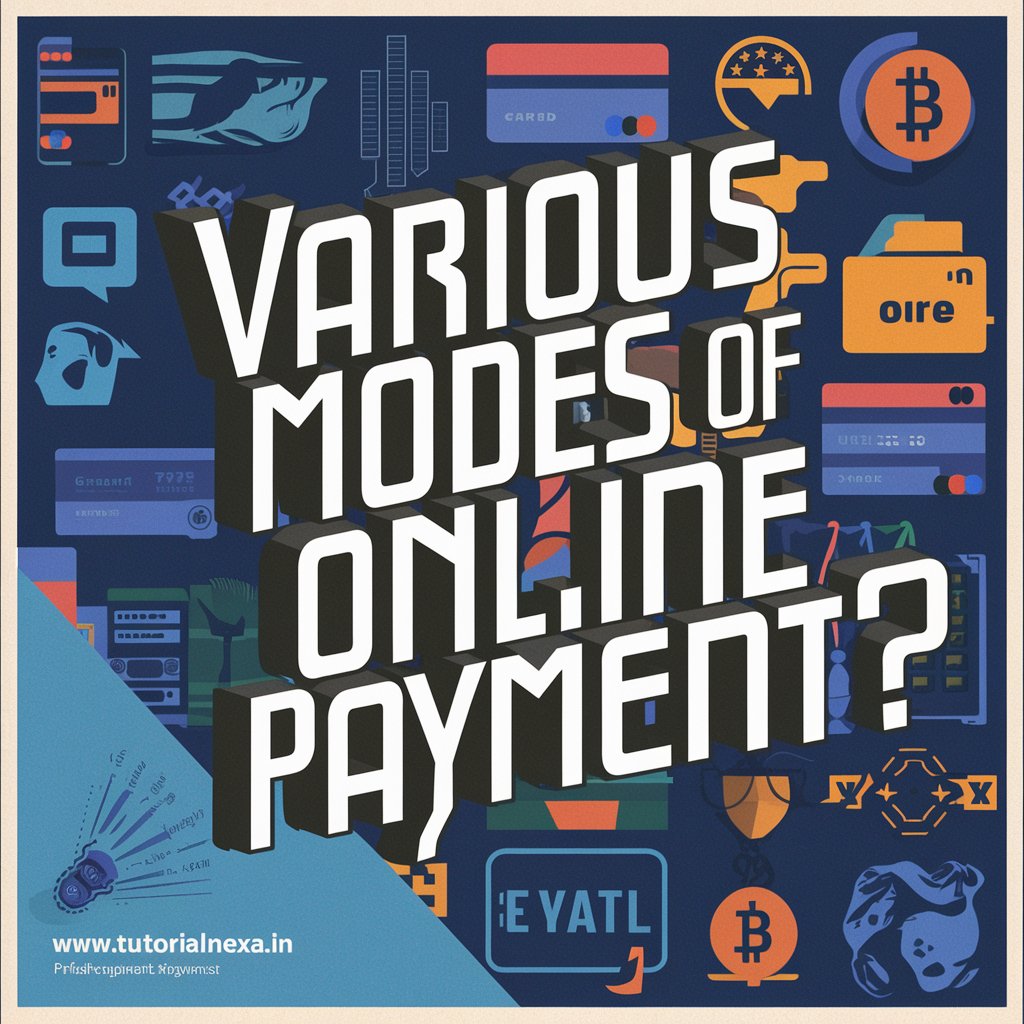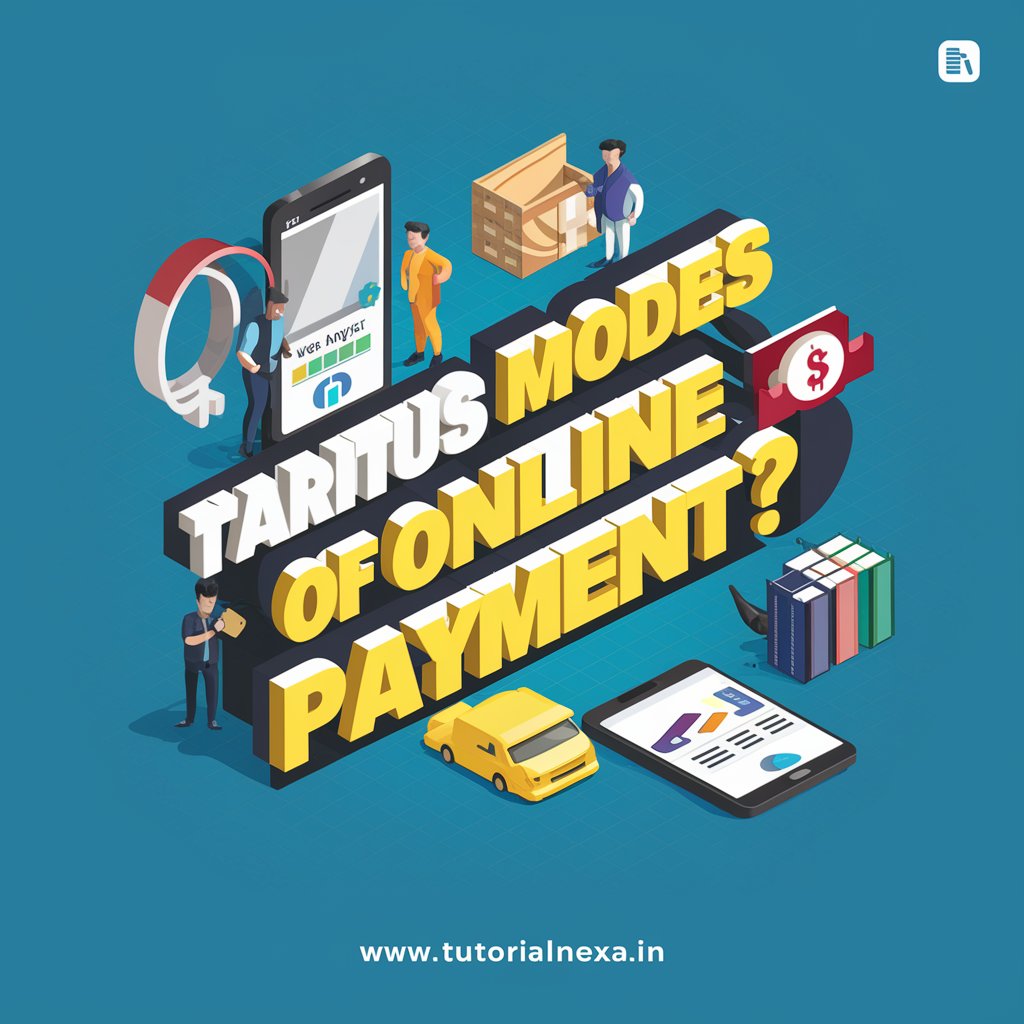introduction
Good morning, students! Today, we’ll be exploring the various modes of online payment. In today’s digital age, understanding how online payments work is crucial. Online payments have revolutionized the way we transact, making it faster, easier, and more convenient to buy goods and services.

What are Online Payments?
Online payments are transactions made over the internet, allowing users to pay for goods and services electronically. These payments can be made using different methods, which we will discuss in detail.
Modes of Online Payment
1. Credit and Debit Cards
- Credit Cards: Allow users to borrow funds from the card issuer up to a certain limit to purchase items or withdraw cash. They offer the convenience of paying later.
- Debit Cards: Directly linked to the user’s bank account, and the money is deducted immediately from the account upon making a purchase.
Advantages:
- Widely accepted.
- Offers protection against fraud.
Disadvantages:
- Risk of overspending with credit cards.
- Potential for fraud if card details are stolen.
2. Net Banking (Internet Banking)
- Allows users to conduct financial transactions via the bank’s website. Users can transfer funds, pay bills, and make purchases directly from their bank accounts.
Advantages:
- No need to share card details.
- Secure and convenient.
Disadvantages:
- Requires internet access.
- Not all services may be available 24/7.
3. Mobile Wallets
- Digital wallets stored on mobile devices that can be used to make payments. Examples include Paytm, Google Pay, PhonePe, and Apple Pay.
Advantages:
- Easy to use with smartphones.
- Often offer cashback and discounts.
Disadvantages:
- Limited acceptance at some merchants.
- Requires smartphone and internet access.
4. UPI (Unified Payments Interface)
- A real-time payment system developed by the National Payments Corporation of India (NPCI) that facilitates inter-bank transactions. Examples include BHIM UPI, Google Pay, PhonePe, and Paytm.
Advantages:
- Instant transfer of funds.
- No need to enter bank details for every transaction.
Disadvantages:
- Requires linking with a bank account.
- Needs internet access.
5. Prepaid Cards
- Cards that are preloaded with a specific amount of money. Users can spend up to the amount loaded on the card. Examples include gift cards and prepaid travel cards.
Advantages:
- Control over spending.
- Can be used even if the user doesn’t have a bank account.
Disadvantages:
- Limited to the amount loaded.
- May have fees associated with loading or using the card.
6. Buy Now, Pay Later (BNPL)
- Allows consumers to make purchases and pay for them at a future date, often with no interest if paid within a specified period. Examples include services like ZestMoney, LazyPay, and Simpl.
Advantages:
- Immediate purchase without immediate payment.
- Interest-free period.
Disadvantages:
- Risk of overspending.
- Penalties for late payments.
7. Cryptocurrency
- Digital or virtual currency that uses cryptography for security. Examples include Bitcoin, Ethereum, and Ripple.
Advantages:
- Secure and private.
- Lower transaction fees for international payments.
Disadvantages:
- Not widely accepted.
- High volatility in value.
Security Measures
- Two-Factor Authentication (2FA): Adds an extra layer of security by requiring two forms of verification.
- Secure Socket Layer (SSL): Ensures secure communication between the user’s browser and the server.
- Encryption: Protects sensitive information by converting it into a code during transmission.
Conclusion
Understanding the various modes of online payment is essential in today’s digital world. Each mode has its own advantages and disadvantages, and the choice of method depends on convenience, security, and personal preference.

Exam Note
- Credit and Debit Cards: Credit allows borrowing, debit deducts from account. Widely accepted but risk of fraud.
- Net Banking: Conduct transactions via bank’s website. Secure but needs internet.
- Mobile Wallets: Store money on mobile, examples include Paytm and Google Pay. Convenient but limited acceptance.
- UPI: Real-time inter-bank transfers, examples include BHIM UPI. Instant but requires linking with a bank account.
- Prepaid Cards: Preloaded with money, control spending but limited to the amount loaded.
- Buy Now, Pay Later (BNPL): Purchase now, pay later, interest-free period but risk of overspending.
- Cryptocurrency: Digital currency, secure but volatile and not widely accepted.
Always ensure secure transactions by using measures like 2FA, SSL, and encryption.
Summary for Exam:

Online payments encompass various methods including credit and debit cards, net banking, mobile wallets like Paytm and Google Pay, UPI such as BHIM UPI, prepaid cards, Buy Now, Pay Later services, and cryptocurrency like Bitcoin. Each method offers distinct advantages and disadvantages concerning convenience, security, and acceptance. Secure transactions are ensured through measures like 2FA, SSL, and encryption. Understanding these modes is crucial for navigating digital transactions safely and efficiently in today’s world.
Online payments have evolved with technology, offering methods such as credit/debit cards, net banking, mobile wallets (e.g., Paytm, Google Pay), UPI (e.g., BHIM UPI), prepaid cards, Buy Now, Pay Later services, and cryptocurrency. Each method varies in convenience, security, and acceptance. Secure transactions are ensured through measures like 2FA, SSL, and encryption. Understanding these modes is essential for safe and efficient digital transactions today.


